Ancient Rome set a remarkable example in the history of city planning through its innovative integration of urban green spaces and Roman gardens. Unlike mere decorative features, these green areas were essential parts of the Roman city layout. They served multiple practical and cultural purposes, influencing not only the appearance of the city but also the health and social interactions of its residents.
The significance of Ancient Rome’s urban green spaces and gardens can be seen in several key ways:
- Nature was intentionally integrated into densely populated areas.
- Public parks and private garden villas were created to encourage socializing.
- Greenery was utilized to promote environmental sustainability by improving air quality and providing shade.
Roman gardens represented more than just beauty; they were crucial for well-being, community life, and ecological balance. However, it’s important to note that this innovative approach to city planning was not immune to the larger political issues facing the empire. The decline of the Western Roman Empire serves as a stark reminder of how political instability and weak leadership can weaken even the mightiest civilizations.
Additionally, the trade and economy during this time played a vital role in shaping the stability and influence of the empire. Understanding these complex systems offers valuable insights into one of history’s most powerful civilizations.
The legacy of Rome’s approach to urban green spaces continues to inform modern city planning and green space design worldwide.
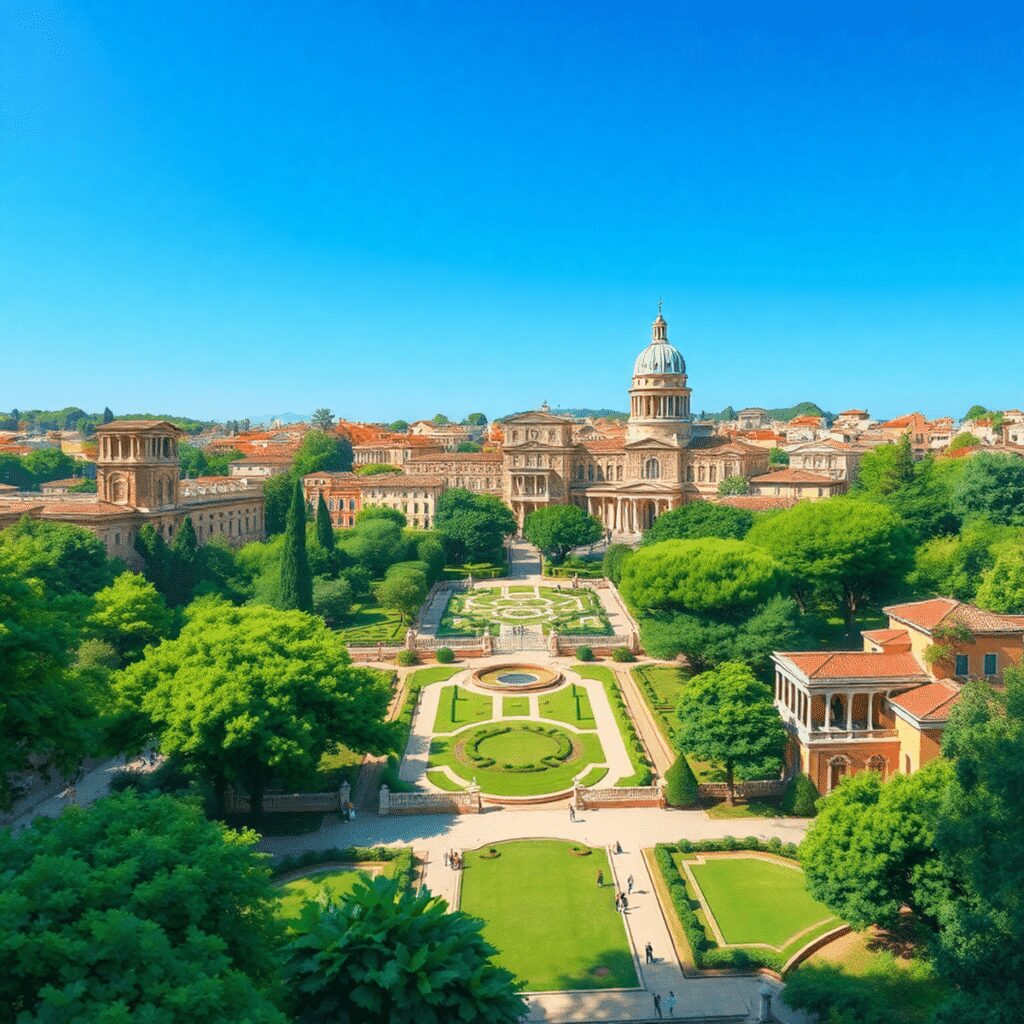
The Philosophical Foundations of Urban Nature: Understanding Rus in Urbe
The Latin phrase rus in urbe, meaning “country in the city,” captures a fundamental aspect of Roman philosophy toward nature in cities. This concept reflects the Romans’ deep cultural belief that urban life should not be divorced from natural surroundings. Instead, nature was seen as integral to civic virtue, personal well-being, and social harmony.
Access to Green Spaces
Romans regarded access to green spaces as essential for maintaining balance between the demands of urban living and the restorative qualities of the countryside. Gardens and parks were not merely ornamental but represented an ideal where nature enriched public and private life. Philosophers and statesmen alike emphasized how proximity to nature fostered mental clarity, physical health, and moral improvement.
Key elements of rus in urbe include:
- Integration of greenery into densely populated areas to promote fresh air and tranquility
- Use of gardens as venues for socializing, reflection, and intellectual pursuits
- Recognition that nature within the city symbolized refinement and civilized living
Roman Urban Design
Roman urban design embraced these values by embedding natural elements into architectural layouts and public planning. The appreciation for rus in urbe laid the groundwork for creating spaces where flora, water features, and open air contributed to a healthier, more vibrant urban experience. This philosophy distinguished Rome’s approach from purely functional or militaristic city planning common in other ancient cultures.
Spiritual Practices
Furthermore, this connection between urbanity and nature was also reflected in their spiritual practices. The Romans believed in many gods, influenced by earlier cultures like the Greeks and Etruscans. These beliefs were deeply connected to their daily lives through rituals and sacrifices that emphasized maintaining good relationships with these deities. Such practices further illustrate how intertwined their urban existence was with both nature and spirituality.
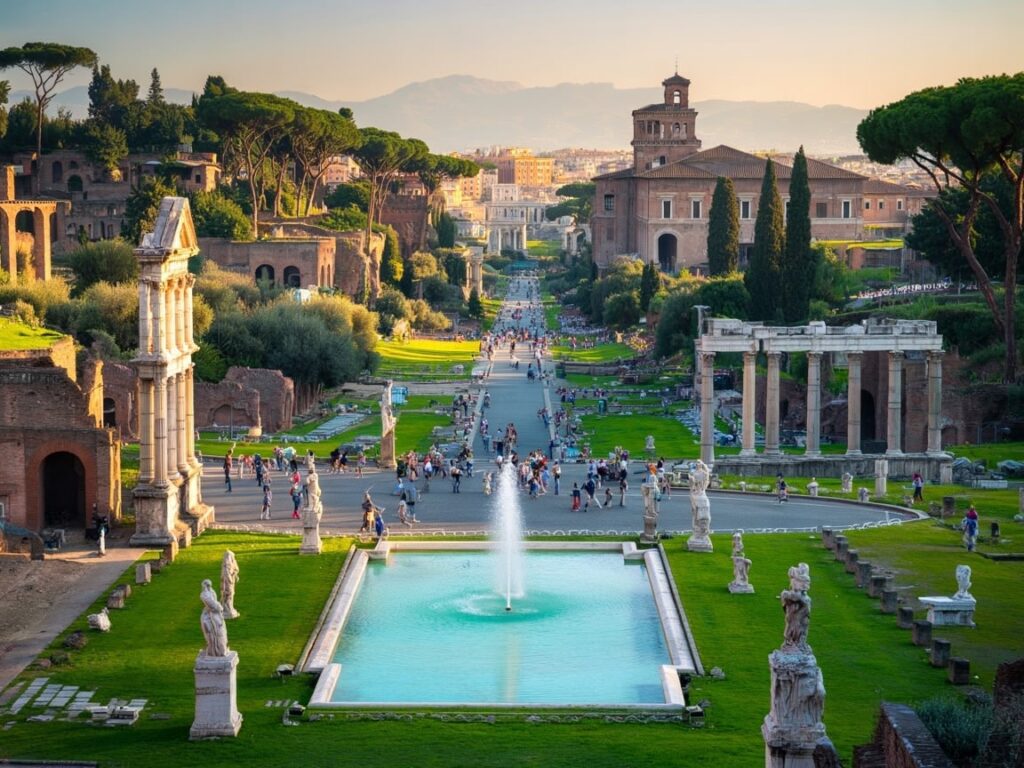
Transformative Public Spaces: Early Examples of Roman Urban Green Spaces
The Campus Martius is a great example of how Ancient Rome changed the way we think about urban green spaces. It started as a large area for military training, but under the rule of Emperor Augustus, it went through an amazing transformation. Augustus saw this space not just as empty land, but as a lively public park that would cater to the growing number of people living in the city.
The Transformation by Augustus
Augustus made significant changes to the area, which included:
- Creating beautifully designed gardens
- Constructing artificial lakes
- Adding facilities for leisure activities
These changes made Campus Martius open and available to all Romans, promoting a new way for people to interact and enjoy their free time within the city. This shift marked a transition from exclusive use by the military to active participation by citizens.
The Importance of Public Parks
Public parks like Campus Martius served several important purposes:
- Community Engagement: They provided a space for people to come together for events, celebrations, and discussions.
- Recreation: These parks offered areas for physical activities, sports, and relaxation away from busy streets.
- Environmental Benefits: They improved air quality in the city and provided shade in the hot Mediterranean climate.
Parks as Part of Urban Life
Roman parks were not just decorative additions but essential parts of everyday life in the city. They brought people together and promoted social connections. The creation of these green spaces showed an understanding of how to blend Rome’s impressive architecture with nature, setting a precedent for future cities when it came to designing public parks.
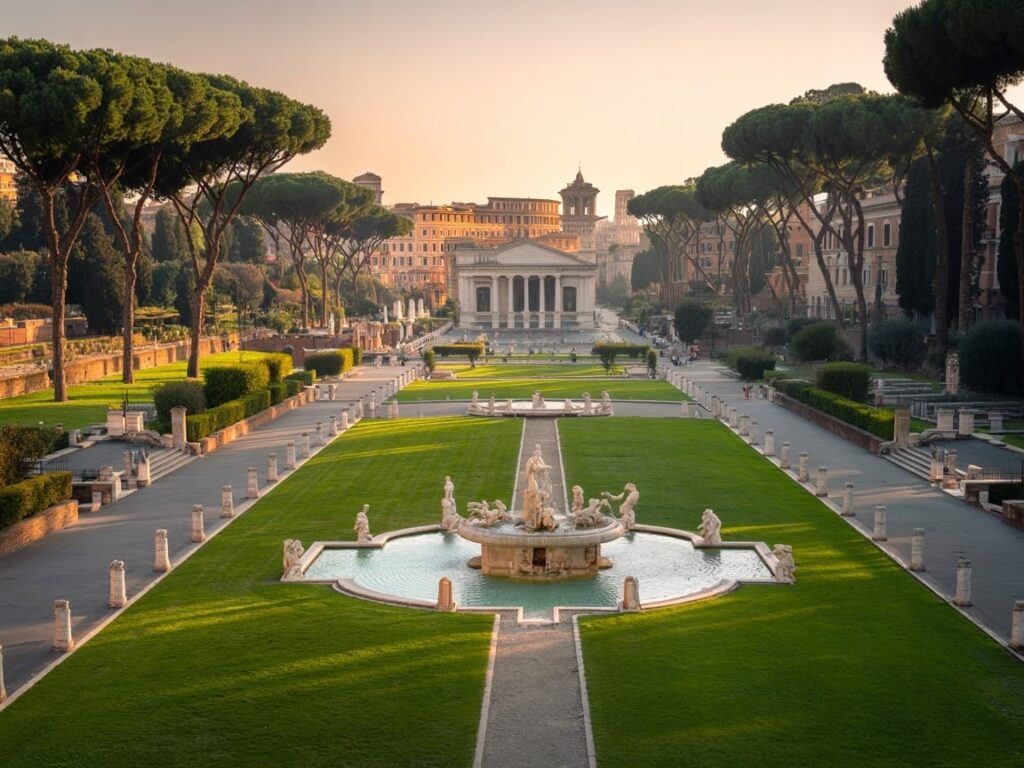
Private Retreats: Roman Garden Villas as Urban Sanctuaries
Roman garden villas were private estates carved out within the dense, bustling cityscape of Ancient Rome. These green sanctuaries offered wealthy citizens a refuge from urban noise, pollution, and overcrowding. The design of these villas emphasized harmony between architecture and nature, often featuring:
- Ornamental gardens with elaborate fountains and sculptures
- Enclosed peristyles opening onto lush greenery
- Shaded walkways lined with aromatic plants and fruit trees
The layout encouraged leisurely strolls, contemplation, and social gatherings in a tranquil environment. These spaces were not merely decorative but served as extensions of the homeowner’s identity and status. Displaying exotic plants or rare garden features conveyed wealth and cultural sophistication.
Roman garden villas also reflected the principle of rus in urbe — bringing the countryside into the city — by creating microcosms of rural life amid Rome’s urban fabric. They provided emotional and physical respite, promoting well-being through access to nature’s calming influence.
This model of private green space demonstrated how Ancient Rome pioneered urban green spaces and gardens beyond public parks, integrating nature as an essential element of daily elite life. The villas’ enduring legacy influenced later European garden designs that combined privacy with natural beauty within growing cities.
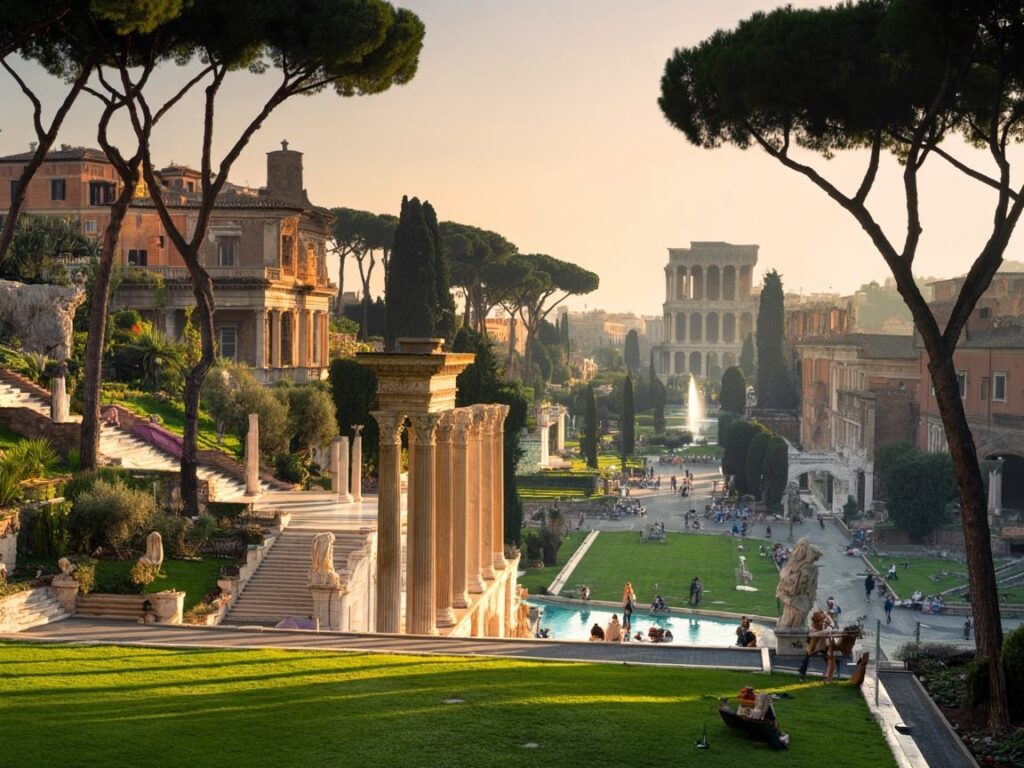
Nero’s Domus Aurea: A Grand Blend of Nature and Architecture
The Domus Aurea, commissioned by Emperor Nero after the great fire of Rome in AD 64, stands as a remarkable example of integrating palace gardens with urban architecture. This vast complex occupied a significant portion of the Oppian Hill and was designed to impress with its scale and luxury. What set the Domus Aurea apart was not just its palatial buildings but its extensive gardens that seamlessly merged nature with constructed spaces.
Key features include:
- Expansive landscaped terraces featuring vineyards, groves, and ornamental pools.
- Gardens that incorporated both wild and tame animals, creating a dynamic natural environment within the city.
- Use of innovative architectural techniques such as vaulted ceilings and large windows to maximize views of greenery.
- Waterworks that fed fountains and artificial lakes, enhancing the sensory experience of lushness amid urban surroundings. These waterworks were part of a broader system that included Roman aqueducts, showcasing advanced engineering skills.
The palace’s design blurred traditional boundaries between inside and outside, making nature an active participant in daily life rather than a distant backdrop. Nero’s vision demonstrated a bold ambition to craft an urban sanctuary where human-made splendor coexisted harmoniously with cultivated natural beauty.
This monumental project symbolized how Roman elites could harness green space for power display while advancing ideas about the restorative role of nature in city living. The Domus Aurea remains a vivid historical testament to Rome’s pioneering spirit in merging architecture with landscape design on an unprecedented scale.
Multifaceted Roles of Roman Gardens and Parks: Beyond Aesthetics
Roman gardens and parks were more than just pretty spaces. They were designed with a purpose—to improve the health and well-being of people living in cities.
Promoting Public Health
One of the key benefits of these green areas was their impact on public health. The trees and plants in Roman gardens provided shade, making the air cooler and reducing dust pollution. This created a cleaner and fresher environment for residents, especially in crowded city streets where fresh air was scarce. The greenery acted as a natural filter, improving the quality of the air and promoting better respiratory health for those living nearby.
Fostering Social Connections
Gardens also played a crucial role in bringing people together. They served as gathering places where Romans could meet, talk about important issues like politics or philosophy, or simply relax and enjoy each other’s company. Public parks such as the Campus Martius hosted various events like athletic competitions and theatrical performances, providing opportunities for community engagement and strengthening social bonds.
Supporting Overall Well-Being
The design of these gardens was intentional, catering to different aspects of human well-being:
- Physical health: The open spaces in gardens encouraged outdoor exercise activities such as jogging, walking, or playing sports.
- Mental well-being: These green areas offered peaceful retreats from the noise and chaos of urban life—a place to unwind, meditate, or connect with nature.
- Cultural exchange: Gardens acted as meeting grounds for diverse groups—people from different backgrounds coming together to share ideas and experiences.
- Political discussions: Accessible public arenas within these gardens became platforms for political debates—an aspect that ties into how coins served as propaganda, reflecting the political climate of that time.
Mirroring Power Dynamics
Moreover, the strategic positioning of these gardens within cities mirrored the broader power dynamics at play—the influence exerted by the Roman military not just through force but also through establishing control over territories and populations.
Roman gardens represented a harmonious way of life where nature coexisted with urban living. Their deliberate placement within cities signified an understanding that integrating natural elements into built environments benefits everyone—not just aesthetically but also by fostering healthier communities connected through shared spaces.
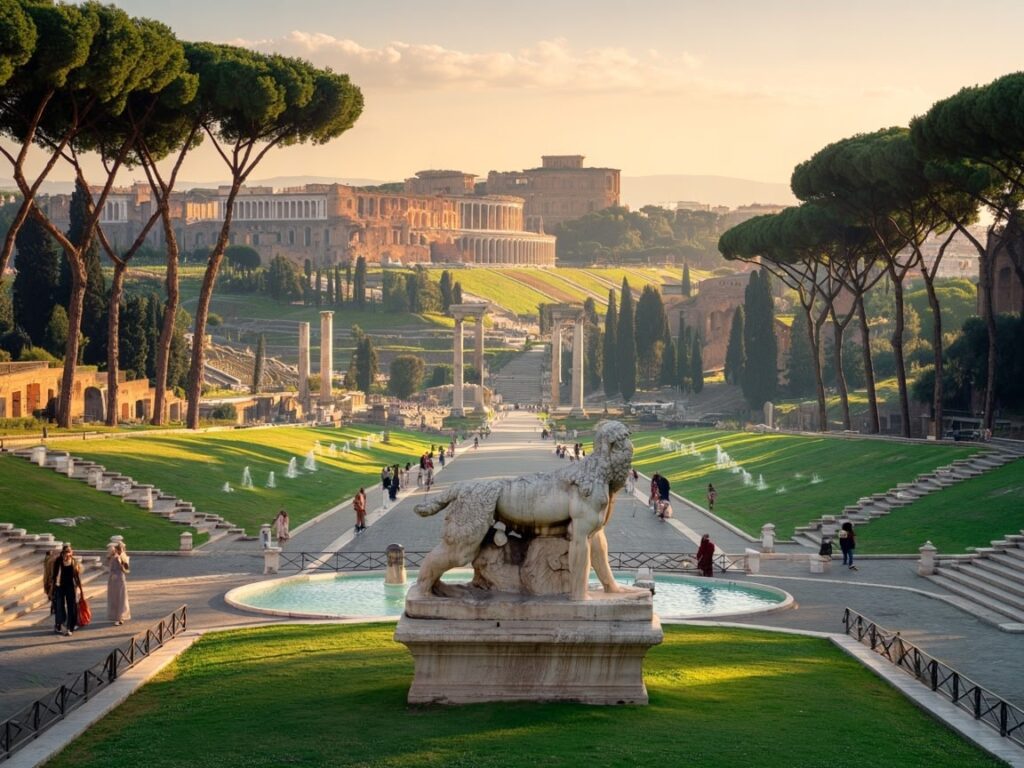
Legacy and Influence: From Renaissance Gardens to Modern Urban Parks
The principles of Roman garden design have had a significant impact on the development of landscape architecture. During the Renaissance, the idea of rus in urbe—incorporating elements of the countryside into urban life—became widely embraced. This led to the creation of gardens that combined natural beauty with structured design. Italian Renaissance gardens drew inspiration from Roman gardens by incorporating features like geometric layouts, water elements, and shaded walkways, highlighting the connection between human creativity and nature.
Key influences include:
- Symmetry and Geometry: Renaissance gardens mirrored Roman ideals of proportion and structured greenery, creating spaces that were both contemplative and socially engaging.
- Integration with Architecture: Villas with surrounding gardens reflected the Roman tradition of blending indoor and outdoor environments seamlessly.
- Use of Water Features: Fountains and reflecting pools became central, echoing Roman engineering prowess in hydraulics.
The influence of Ancient Rome’s urban green spaces can still be seen in modern city planning. Today, urban parks continue to incorporate nature into densely populated areas, promoting public health, recreation, and social interaction. Many contemporary designs also prioritize ecological sustainability alongside visual appeal—a concept rooted in the Roman understanding of gardens as multifunctional assets within cities.
This lasting legacy extends beyond garden design; it also impacts various aspects of modern society such as legal systems, where Roman law continues to have an influence today. Additionally, the social structures established by the Romans have shaped many elements of contemporary life. Even in art, masterpieces from the Roman era still inspire and showcase the empire’s diverse culture and innovative spirit.
The groundbreaking vision behind How Ancient Rome Pioneered Urban Green Spaces and Gardens is still relevant today. It serves as a guiding principle for planners who strive to create a harmonious balance between constructed environments and the rejuvenating qualities of green spaces, fostering vibrant city living.
Preserving Rome’s Green Heritage Today: From Private Estates to Public Parks
Rome’s green legacy continues through iconic parks that once served as private or religious estates, now open to the public. Notable examples include:
- Villa Borghese: Originally a private garden of the Borghese family, this park showcases classical landscaping blended with artistic and architectural treasures.
- Villa Doria Pamphili: Once an aristocratic estate, it remains one of Rome’s largest green spaces, preserving Italian garden design and natural woodland.
- Parco degli Acquedotti and Villa Ada also reflect the transformation of historical lands into vital urban oases.
Preservation of these spaces is crucial. They act as living museums of Rome’s rich cultural and horticultural history while providing essential environmental benefits such as air purification, temperature regulation, and habitats for urban wildlife. The principles behind How Ancient Rome Pioneered Urban Green Spaces and Gardens remain relevant—green spaces are not luxury but necessity for sustainable city living and community well-being. Protecting them ensures future generations inherit both heritage and health.
FAQs (Frequently Asked Questions)
What was the significance of urban green spaces in Ancient Rome’s city planning?
Ancient Rome pioneered the integration of urban green spaces and gardens, which were not merely decorative but played crucial roles in promoting well-being, social interaction, and environmental sustainability within the city.
What does the term ‘rus in urbe’ mean and how did it influence Roman urban design?
‘Rus in urbe,’ meaning ‘country in the city,’ reflects the Roman philosophical appreciation for incorporating nature into urban environments. This concept influenced their approach to city planning by emphasizing nature as essential to civility and well-being.
How did public parks like Campus Martius serve Roman society?
Campus Martius was transformed from a military ground into a vibrant public park under Emperor Augustus. Such parks fostered community engagement, recreation, and provided accessible green spaces that enhanced social life in Ancient Rome.
What role did private Roman garden villas play within the urban landscape?
Roman garden villas served as private retreats for wealthy citizens amidst the bustling cityscape. These estates reflected social status and offered solace from urban chaos through carefully designed gardens that blended nature with architecture.
How did Emperor Nero’s Domus Aurea exemplify the fusion of nature and architecture?
The Domus Aurea was an opulent palace complex featuring extensive gardens that blurred boundaries between built environment and natural elements. It showcased the Romans’ ambition to harmoniously integrate greenery into urban life on a monumental scale.
What is the legacy of Ancient Rome’s approach to urban green spaces in modern city planning?
Ancient Rome’s pioneering vision laid foundational principles for integrating nature into cities, influencing Renaissance garden designs and modern urban parks. Their approach continues to inspire sustainable urban environments that value green spaces for health, social interaction, and cultural heritage.

